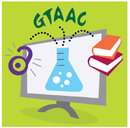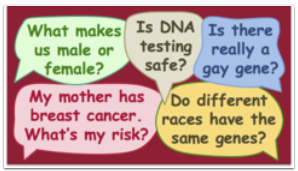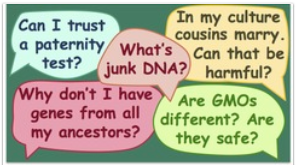USEFUL GENETICS
|
About the Course
This college-level course gives students a thorough understanding of gene function, and enables them to apply this understanding to real-world issues, both personal and societal. Each of the 2 parts is designed to be complete in 6 weeks. The course videos are permanently available so you can work at your own pace. How can I take the course? ANYONE can take this course. You can access it on YouTube HERE. Who might want to take this course?
|
Dr. Rosemary Redfield is a Professor at the University of British Columbia, where she has been teaching genetics to UBC students since 1993, and online since 1998. She earned her PhD at Stanford University and did post-doctoral work at Harvard University and the Johns Hopkins School of Medicine. Her research investigates the mechanism, regulation, and evolutionary functions of DNA uptake by bacteria.
|
This course is taught periodically through Coursera, where you can take the exams and obtain a statement of accomplishment or certificate of completion if you satisfy the requirements. It is offered here under the terms of the Creative Commons license.
COURSE SYLLABUS
Part 1. Genes and their effects
Module 1. How different are we? Introduction to DNA, genes and chromosomes and the relationships between human populations. Ancestral interbreeding with Neanderthals. Module 2. How DNA molecules change. The causes and immediate consequences of mutations. Module 3. DNA differences and gene functions. How mutations that change gene activity or function affect the properties of organisms. Module 4. Mutations in regulatory genes. How mutations cause cancer. Sex determination and genes on sex chromosomes. Module 5. Natural genetic variation. How natural genetic variation is studied, and how it differs from classical alleles. Heritability and genome-wide association studies. Genetic variation for cancer risks. Module 6. Personal genomics. Kinds of DNA typing and genome analysis, and what can be learned from them about health risks, personal attributes and ancestry. |
Part 2. Inheritance
Module 7. The mechanics of inheritance. How genes and chromosomes are transmitted through the generations (including the molecular mechanisms of mitosis and meiosis). Module 8. Genetic analysis. Using genetic crosses as a research tool to investigate how genes work and what they do. Sex-linkage, pedigree analysis, and hypothesis testing. Module 9. All about breeding and inbreeding. More about heritability and association studies. Inbreeding in humans, crops and livestock, and evolution. Hybrids and genetically modified organisms. Module 10. Chromosomal changes. Changes in the number of chromosomes and in how genes are arranged on them. Genome evolution. Module 11. Selected advanced topics. The origin of life, mitochondrial genes and mutations, genetic mosaicism, fetal DNA in mothers, epigenetic inheritance, and other topics students may suggest. |





